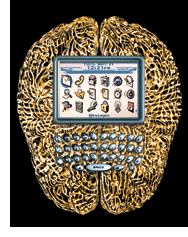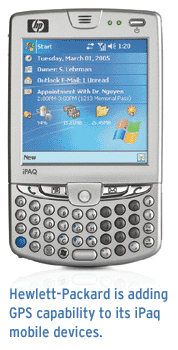Big Features, Small Devices

One of the latest features, persistent memory, has been a boon for the mobile professional. How many people have lost important contacts and calendar information on the road because they forgot to charge their handheld system or smart phone? Persistent flash memory retains data even if the device&s battery dies, ensuring data is still around when a battery is recharged.
Newer devices are building on that technology with larger stores of flash memory—as high as 2 Gbtyes—as well as better access to wireless services and new ways to use wireless connectivity. Larger memory stores mean mobile workers can take more data with them on the road.

Palm ushered in the largest jump in storage capacity for handhelds when it released the LifeDrive in May. About the size of a typical handheld, the LifeDrive runs the Palm OS and includes a 320-by-480 high-resolution color screen, 4-Gbyte microdrive and built-in Wi-Fi and Bluetooth networking. Using a touch-screen menu, documents can be viewed horizontally or vertically. The list price currently is $499, though as with all consumer electronics, that price is expected to drop over time.
Although its LifeDrive will appeal to consumers with its ability to manage photos and play videos and music, Palm also is targeting vertical markets such as health care and insurance, said Tara Griffin, vice president of enterprise sales at the Milpitas, Calif.-based company.
Primerica Financial Services, for example, created an application for Palm devices, including the LifeDrive, that enables its field sales agents to complete insurance applications quickly, without any paper. The application guides agents through the process, eliminating errors and improving service levels. LifeDrive makes up about 2.5 percent of handhelds deployed to field agents, according to Duluth, Ga.-based Primerica.
What&s next for Palm?
“We are seeing a lot of development in screen and battery technology,” Griffin said.

Kevin Young, senior consultant at CompuCom, Houston, would rather see Palm and other manufacturers work harder to make sure the PDA operating system and phone software work together without hiccups. “What is missing is stabilization,” he said. “People complain because their phones are crashing. They&re looking for 99.9 percent uptime.”
While Palm focuses on innovation in the LifeDrive, another handheld market leader, Hewlett-Packard expects to release by the end of the year an alternative to Palm&s Treo and Research In Motion&s popular BlackBerry.
Already available in Europe, the HP iPaq 6500 smart phone looks like a typical PocketPC but is designed for wireless e-mail, messaging and Internet access. “Our focus is on converged voice and data—full cell phone capabilities and full wireless Internet capabilities,” said Brant Jones, manager of iPaq software marketing at HP.
The IPaq 6500 is HP&s second-generation smart phone. It has an built-in keyboard and adds a feature its U.S. competitors have yet to integrate. The device will include a built-in GPS and mapping system that mobile users can navigate via voice commands to specific locations. Maps are kept in on-board memory, one reason that larger memory cards may come in handy.
“Our device is the first one out in the mass-market context to offer that kind of use case,” Jones said. “Other devices are bulky and high-cost.”
In addition to appealing to sales people, Jones said the GPS functionality will be helpful to solution providers building applications for transportation, surveyors and real-estate agents.
Peter Nelson, president of Advanced Computer Resources, a Nashua, N.H.-based solution provider that has built a number of location-based applications for clients, said people are hungry for good GPS devices.
“We keep looking for solutions with integrated GPS, but they are few and far between,” he said.
It may be happening slowly, but solution providers are starting to see the integrated functionality they need to build compelling mobile applications.